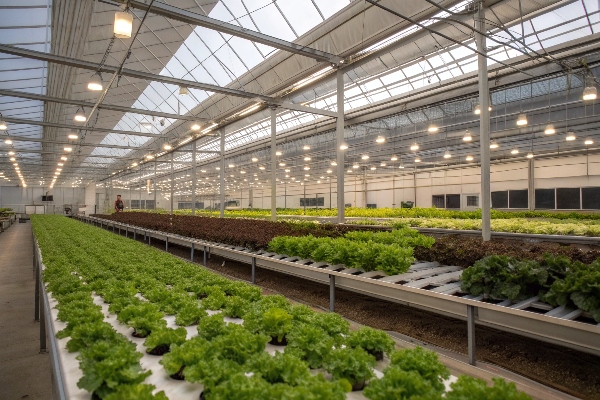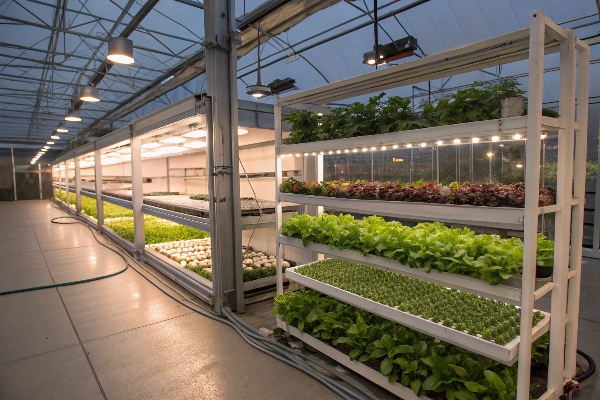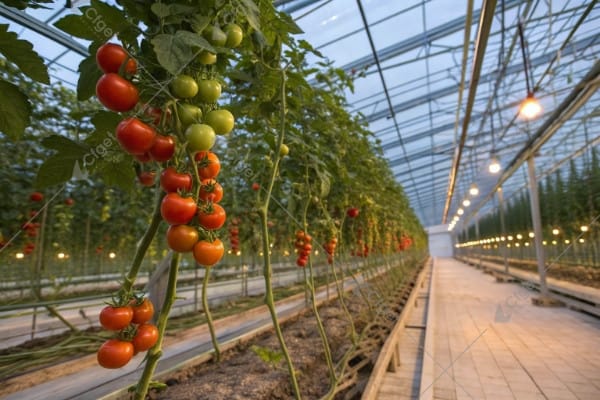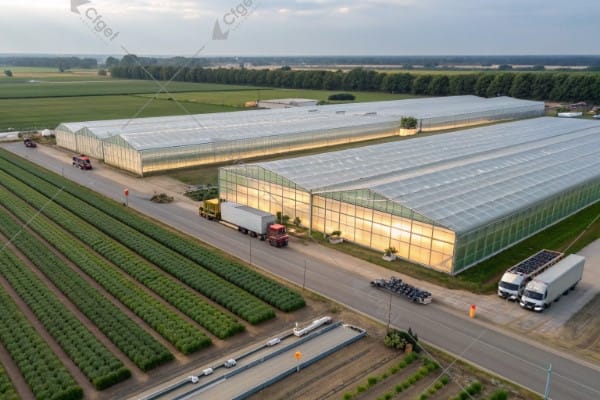Growers face a critical decision between light deprivation and indoor farming systems. Choosing the wrong approach can cost hundreds of thousands in lost revenue and failed crops.
Light deprivation uses natural light with controlled darkness periods in greenhouse structures, while indoor farming relies entirely on artificial lighting in closed environments, with light dep offering 60-80% lower energy costs but indoor providing complete environmental control.

During my 29 years in controlled environment agriculture, I’ve witnessed the evolution from basic greenhouses to sophisticated growing systems. The choice between light deprivation and indoor farming has become one of the most important decisions facing modern growers. Each approach offers distinct advantages, but selecting the wrong system for your specific situation can be financially devastating.
Don’t Miss:——Commercial Greenhouse Materials Showdown: Polycarbonate vs Glass – Which Covering Will Maximize Your 2025 ROI?
You might like:——What is a Smart Greenhouse? The Ultimate Guide to Automated Growing
Understanding the Two Main Technologies: Core Mechanics and How They Work?
Both light deprivation and indoor farming manipulate plant photoperiods, but they achieve this control through completely different mechanisms. Understanding these core differences is essential for making informed decisions about your growing operation.
Light deprivation systems use automated blackout curtains or covers in greenhouse structures to control natural light exposure, while indoor farming creates completely artificial environments using LED lighting systems with precise spectrum and timing control.
%[light deprivation blackout system](Automated blackout curtains in greenhouse light dep system "Automated blackout curtains in greenhouse light dep system")
Light deprivation technology centers around manipulating natural sunlight to trigger specific plant responses. The system uses automated blackout materials to create darkness periods during natural daylight hours. When I first encountered this technology in the early 2000s, most systems used manual tarps that required significant labor. Today’s automated systems use motors and sensors to deploy blackout curtains with precision timing.
The mechanics involve photoperiod manipulation to control flowering cycles in light-sensitive crops. Cannabis, for example, requires specific dark periods to trigger flowering. Light deprivation allows growers to initiate flowering cycles regardless of natural seasonal changes. This enables multiple harvests per year and precise timing for market demands.
Modern light deprivation systems integrate environmental controls beyond just light manipulation. Temperature management becomes crucial when blocking natural ventilation with blackout materials. I’ve designed systems that coordinate blackout deployment with cooling systems to maintain optimal growing conditions. The integration requires sophisticated control systems that monitor multiple environmental parameters simultaneously.
Indoor farming operates on completely different principles. These systems create artificial environments with no reliance on natural light or weather conditions. LED lighting provides all photosynthetic energy, with growers controlling every aspect of the light spectrum, intensity, and duration. The technology allows for precise manipulation of plant growth characteristics through light recipes tailored to specific crops and growth stages.
Vertical farming represents the most advanced form of indoor agriculture. Multiple growing levels maximize space utilization while LED systems provide customized lighting for each level. I’ve worked on vertical farms with 10-12 growing levels in facilities that would accommodate only single-level greenhouse production. The space efficiency is remarkable, but the complexity and energy requirements are equally impressive.
Environmental control in indoor farming extends far beyond lighting. Air circulation, humidity control, CO2 supplementation, and nutrient delivery all operate independently of external conditions. This complete isolation allows for year-round production with consistent quality, but it also means every environmental input must be artificially provided and carefully managed.
Key Decision Factors: Comparing Cost, Climate Adaptability, and Technical Barriers?
The financial and operational differences between light deprivation and indoor farming are substantial. Understanding these factors helps determine which approach aligns with your resources and market conditions.
Initial investment for light deprivation systems ranges from $15-40 per square foot, while indoor farming requires $200-600 per square foot, but operational costs vary significantly based on energy prices and climate conditions.

Capital investment represents the most obvious difference between these systems. Light deprivation builds upon existing greenhouse technology, adding blackout systems and enhanced environmental controls. The incremental cost over standard greenhouse construction is relatively modest. I’ve helped clients implement light deprivation systems for $25-35 per square foot in most markets.
Indoor farming requires completely different infrastructure. Building costs, HVAC systems, electrical capacity, and LED lighting create substantial upfront investments. A recent project I consulted on required $400 per square foot for a mid-scale vertical farming facility. The electrical infrastructure alone cost more than an entire light deprivation greenhouse.
Operating costs tell a different story. Light deprivation systems benefit from natural light, reducing energy consumption by 60-80% compared to indoor farming. However, climate control during blackout periods can be challenging and expensive. In hot climates, cooling costs during darkness periods can be substantial. I worked with a client in Arizona who spent $40,000 annually on additional cooling for their light deprivation system.
Indoor farming energy costs are predictable but high. LED lighting typically represents 25-35% of total operating costs. However, the controlled environment eliminates weather-related crop losses and enables consistent production schedules. One client in Canada calculated that their indoor farm’s predictable harvest schedule justified the higher energy costs through premium pricing and reduced waste.
Climate adaptability varies dramatically between systems. Light deprivation works best in regions with favorable natural growing conditions. Extreme climates create challenges for maintaining proper conditions during blackout periods. Indoor farming performs consistently regardless of external climate but requires more energy in extreme conditions for building climate control.
Technical barriers differ significantly between approaches. Light deprivation requires understanding of natural light patterns, seasonal variations, and integration with existing greenhouse systems. The learning curve is moderate for experienced greenhouse operators. Indoor farming demands expertise in LED technology, vertical growing techniques, and complex environmental control systems. The technical knowledge requirements are substantially higher.
Labor requirements also vary between systems. Light deprivation often requires more manual intervention for crop management and system maintenance. Indoor farming can be highly automated but requires skilled technicians for system management and troubleshooting. The labor cost per unit of production often favors indoor farming in high-wage markets.
The Crop Perspective: Matching the Best Growing Environment for Specific Plants?
Different crops respond uniquely to light deprivation and indoor farming environments. Selecting the right system based on your target crops is crucial for achieving optimal yields and quality.
Light-sensitive crops like cannabis and certain medicinal plants thrive in light deprivation systems, while leafy greens, herbs, and microgreens perform exceptionally well in indoor vertical farming environments with customized LED spectrums.

Cannabis represents the most common application for light deprivation technology. The plant’s photoperiod sensitivity makes it ideal for controlled lighting manipulation. Natural sunlight provides excellent photosynthetic energy during vegetative growth, while controlled darkness periods trigger flowering on demand. I’ve seen cannabis operations achieve 3-4 harvest cycles annually using light deprivation, compared to 1-2 cycles with natural outdoor growing.
Medicinal plants often benefit from light deprivation systems because they frequently require specific photoperiod conditions for optimal compound production. Many pharmaceutical crops need precise timing for harvest to maximize active ingredient concentrations. Light deprivation allows growers to synchronize flowering and harvest timing with processing schedules and market demands.
Fungi cultivation represents another excellent application for light deprivation technology. Many mushroom varieties require specific light and darkness cycles for proper fruiting. The ability to create complete darkness during critical growth phases while maintaining optimal temperature and humidity makes light deprivation ideal for commercial mushroom production.
Indoor farming excels with crops that benefit from precise environmental control and don’t require large plant structures. Leafy greens like lettuce, spinach, and kale perform exceptionally well under LED lighting. The ability to customize light spectrums for different growth stages optimizes both yield and nutritional content. I’ve worked with indoor farms producing lettuce with 40% higher vitamin content than field-grown varieties.
Herbs and microgreens are particularly well-suited to indoor farming systems. These crops have short growing cycles, high value per unit weight, and respond well to controlled environments. The ability to grow year-round with consistent quality commands premium prices in many markets. One client produces basil year-round, selling to high-end restaurants at prices 300% above field-grown herbs.
Strawberries and other berry crops can succeed in both systems, but the choice depends on specific goals. Light deprivation allows for natural pollination and larger fruit size, while indoor farming enables year-round production and protection from pests and diseases. The decision often comes down to market timing and premium pricing opportunities.
Root vegetables generally perform better in light deprivation systems because they need more space for root development. Indoor farming can work for smaller root crops like radishes and baby carrots, but larger crops like potatoes or carrots are typically more economical in light deprivation greenhouses.
Flowering ornamental plants often require specific photoperiod manipulation for commercial production. Light deprivation allows growers to time flowering for holiday markets and special events. The combination of natural light quality with controlled photoperiods produces superior flower quality compared to purely artificial lighting systems.
Long-Term Benefit Considerations: ROI Potential and Market Adaptability Analysis?
The long-term financial performance and market positioning of light deprivation versus indoor farming systems depend on multiple factors that extend beyond initial crop production considerations.
Light deprivation systems typically achieve ROI within 3-5 years with lower risk profiles, while indoor farming can generate higher returns within 2-4 years but requires greater market sophistication and carries higher operational risks.
Return on investment calculations must consider both direct production economics and market positioning advantages. Light deprivation systems generally offer more predictable returns with lower risk profiles. The lower initial investment and operating costs create more forgiving business models that can survive market fluctuations and operational challenges.
I’ve tracked performance data from multiple light deprivation installations over 10-15 year periods. Most achieve positive cash flow within 18-24 months and full ROI within 4-5 years. The key advantage is operational flexibility. If energy costs spike or market prices drop, operators can adjust production schedules or even suspend operations temporarily without catastrophic losses.
Indoor farming presents higher risk-reward scenarios. The substantial initial investments require consistent high-value crop production and premium market access to justify the costs. However, successful operations can achieve remarkable returns. One vertical farming client I worked with achieved full ROI within 30 months by focusing on ultra-premium microgreens for high-end restaurants.
Market adaptability varies significantly between systems. Light deprivation operations can more easily pivot between different crop types because the basic growing environment resembles traditional greenhouse production. Indoor farms are typically optimized for specific crops, making diversification more challenging and expensive.
Technology evolution affects long-term viability differently for each system. Light deprivation technology is relatively mature, with incremental improvements in automation and control systems. The technology risk is low, but competitive advantages may be limited. Indoor farming technology continues evolving rapidly, particularly in LED efficiency and automation. Early adopters can gain significant competitive advantages, but they also face risks from technological obsolescence.
Energy cost trends significantly impact long-term economics. Light deprivation systems are less vulnerable to energy price fluctuations because they use 60-80% less electricity than indoor farming. As renewable energy becomes more prevalent and battery storage costs decline, this advantage may diminish, but it will remain significant for the foreseeable future.
Labor cost trends also affect long-term competitiveness. Indoor farming’s automation potential may provide advantages in high-wage markets, while light deprivation’s lower technology requirements may be advantageous in regions with lower labor costs but higher technology costs.
Regulatory changes can impact both systems differently. Food safety regulations often favor indoor farming’s controlled environment, while energy efficiency regulations may favor light deprivation’s lower energy consumption. Staying informed about regulatory trends is crucial for long-term planning.
Market consolidation trends suggest that larger operations will have competitive advantages in both systems. Light deprivation may be more accessible to smaller operators due to lower capital requirements, while indoor farming may favor larger, well-capitalized operations that can achieve economies of scale.
Conclusion
Success depends on matching system capabilities with your specific crops, climate conditions, market access, and financial resources rather than choosing based on technology trends alone.





